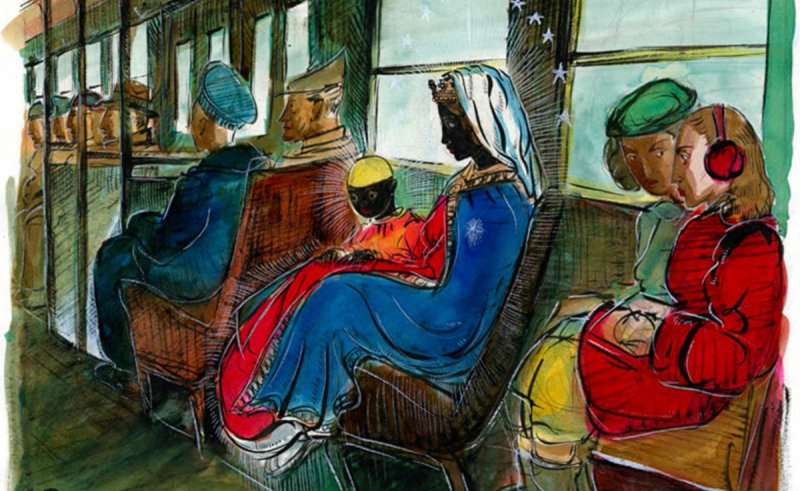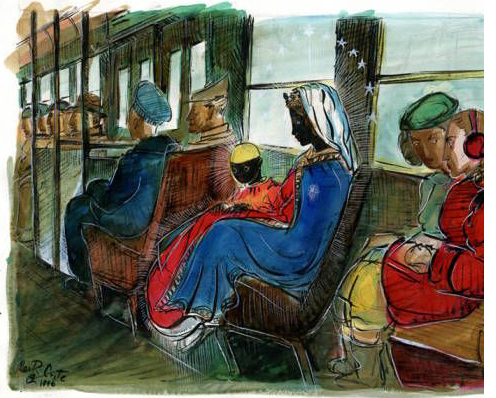
28 Feb 2019 The Art of Faith: Allan Rohan Crite at St. John St. James Parish, Roxbury
The life and career of artist Allan Rohan Crite were so lengthy – he lived to be 97 and passed away in 2007 – that a study of his art reveals a diverse range of subject matter that changed significantly over time. Best known for his extraordinary paintings of African American life in the 1930s and 40s in Boston’s South End, Crite’s own Episcopalian faith influenced an oeuvre of religious works that were at once in line with church dogma and yet unusually expressive of the African American experience.
Why are we so interested? HBI has been working with the Episcopal Church of St. John St. James in Roxbury on strategies for restoring and re-activating two historic buildings – St. Luke’s Chapel (1903) and Ionic Hall (1801). The parish, as reflected in its name, is a merger of two Roxbury churches that took place in the 1960s after circumstances required the two churches to find a new home. Together the new church built a modern addition to the federal period Ionic Hall in 1968, which isthe primary worship space of the parish to this day.
The 1960s sanctuary presents as a modern, airy, flexible space without the traditional processional focus on an altar. It is also decorated throughout with an intriguing assembly of historic items from the former parishes of St. John and St. James, like framed and backlit stained glass windows, a marble gothic baptismal font and two large hanging crosses with the crucified Jesus, presumably from the two parishes. However, it is the mid-20th century artwork that is distinctive to this space. An unknown artist’s work in wood panel religious imagery graces a considerable percentage of the wall space, but interspersed among this array of religious artifacts, are works by Crite.
St. John St. James’ fourteen Stations of the Cross are black and white prints that were painted in vibrant colors by Allan Rohan Crite. They are spread evenly around the new sanctuary’s perimeter. A larger painting of Jesus, the John and James as fisherman, the Prophet Elias and the Apostle James hangs on one of the walls in colorful blues and yellows.
Crite’s religious works often presented iconic Christian imagery overlaid onto contemporary city life. As he stated in his autobiography, “For a long time, I felt as far as the Church was concerned, that there was too much the impression of a mostly European institution, practically to the exclusion of anything else.” He frequently depicted the religious figures as black. At St. John St. James, however, in his painting of Jesus and the Apostles, race is difficult to ascertain. By comparison, the Stations of the Cross illustrate a more diverse expression of Jesus and the figures involved in the Christian procession.
Current parishioners are not sure how Crite’s works made their way to St. John St. James. The parish, whose members are predominantly African American, may have sought to engage new imagery for the merged congregations that reflected their own membership and expressed the work of one of Boston’s great African American artists.
A public square and park in Boston are named for Allan Rohan Crite, and many of his paintings are within the collections of great institutions like the Boston Athenaeum, the Museum of Fine Arts and the National Center of African American Artists. However, in the practice of the faith he valued so much, Crite’s contributions to the church of St. John St. James in Roxbury perhaps offer a glimpse of the way he saw his art used for worship and inspiration.







